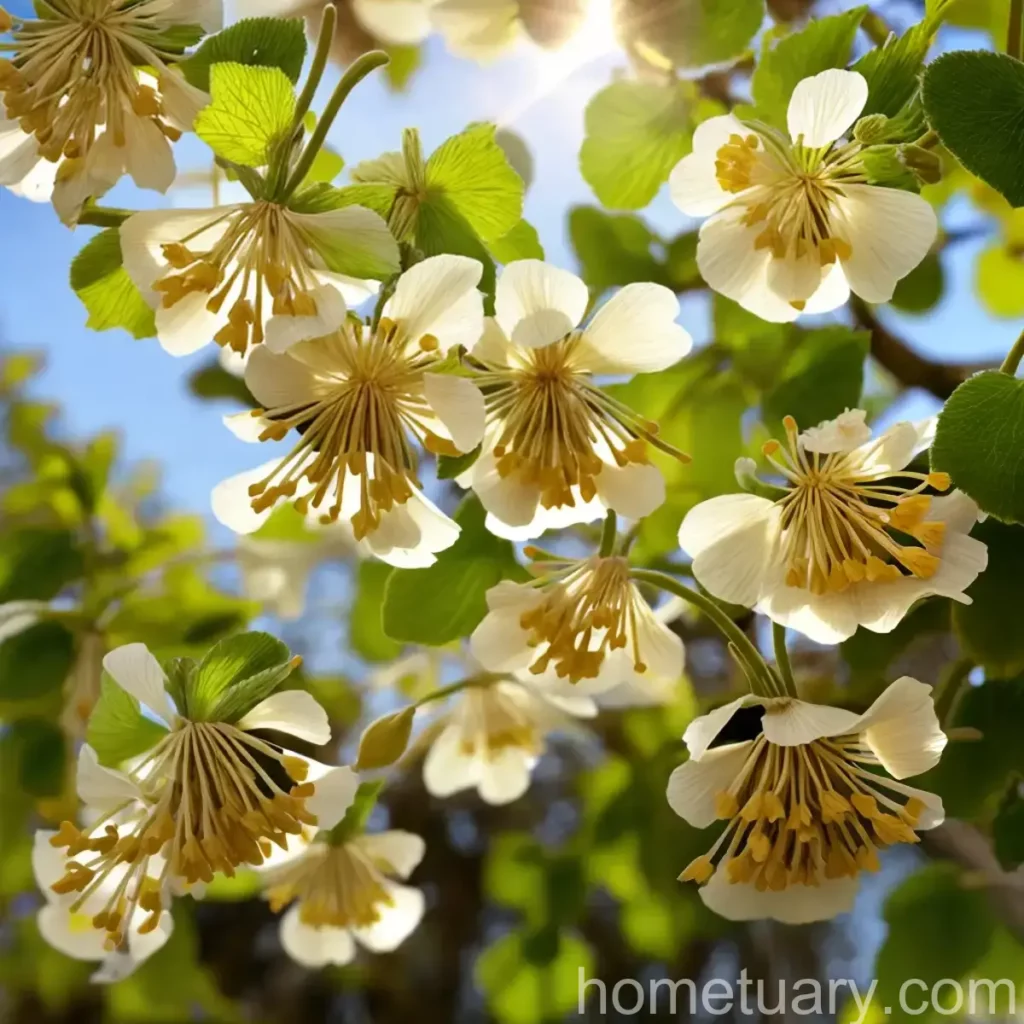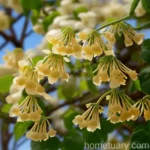Winter Hazel (Corylopsis pauciflora): A Comprehensive Guide to Care, Cultivation, and Benefits
Introduction to Winter Hazel
Plants have a way of captivating us with their beauty, resilience, and pure majesty. Among the diverse and enchanting plants is the winter hazel, scientifically known as Corylopsis pauciflora. This elegant shrub is a member of the Hamamelidaceae family and is native to East Asia. Winter hazel is prized for its remarkable clusters of delicate, bell-shaped flowers that adorn its branches in early spring, creating a breathtaking spectacle.
In this extensive guide, we will delve into every aspect of the winter hazel plant – from its cultural requirements to its uses, diseases, and everything in between.
What is Winter Hazel (Corylopsis pauciflora)?
Scientific Name: Corylopsis pauciflora
Common Name: Winter Hazel
Family: Hamamelidaceae
Genus: Corylopsis
Species: Pauciflora
Key Takeaways – Winter Hazel (Corylopsis pauciflora)
Before delving into the finer details of winter hazel care and cultivation, it’s essential to grasp the fundamental characteristics and insights that define this captivating plant. Here are some key takeaways:
- Scientific Name: Corylopsis pauciflora
- Habitat: Native to East Asia
- Flowering Time: Early spring
- Sun Exposure: Partial shade to full sunlight
- Water Requirements: Moderate
- Uses: Ornamental shrub, landscaping, container gardening
- Hardiness Zone: 6-8
- Common Pests: Aphids, scale insects
Culture of Winter Hazel (Corylopsis pauciflora)
Cultivating winter hazel involves understanding its specific cultural requirements – from soil and sunlight to water and fertilizer needs. Let’s explore each of these aspects in more detail:
1. Water
Watering Requirements: Winter hazel plants generally require consistent moisture, especially during the growing season. However, it’s crucial to avoid waterlogged conditions.
Watering Frequency: Regular watering, especially during dry periods, is essential to promote healthy growth and blooming.
2. Sunlight
Sun Exposure: Winter hazel thrives in partial shade to full sunlight. While it can tolerate some shade, providing ample sunlight encourages robust flowering and overall plant vigor.
3. Fertilizer
Fertilization: Applying a balanced, slow-release fertilizer in spring is beneficial for the winter hazel. Incorporating organic matter into the soil can also support its nutrient requirements.
4. Soil
Soil Type: Well-draining, loamy soil with a slightly acidic to neutral pH is ideal for winter hazel cultivation. Ensure that the soil is rich in organic matter to promote healthy growth.
5. Pruning
Pruning Techniques: Pruning is best performed after blooming to maintain the desired shape and remove any damaged or congested branches. It’s essential to prune with care to preserve the plant’s natural form and maximize blooming the following year.
Uses of Winter Hazel (Corylopsis pauciflora)
Beyond its ornamental value, winter hazel offers a range of uses that make it a sought-after addition to gardens and landscapes. Let’s explore its diverse applications:
-
Landscaping: Winter hazel is widely used in landscaping to add ornamental interest, particularly during the spring flowering season. Its graceful form and stunning flowers make it an excellent choice for garden borders and woodland settings.
-
Container Gardening: The compact habit of some winter hazel cultivars makes them well-suited for container gardening. They can be showcased on patios, decks, or balconies to bring seasonal beauty to outdoor spaces.
-
Wildlife Value: The nectar-rich flowers of winter hazel attract pollinators such as bees and butterflies, contributing to biodiversity and ecological balance.
Propagation of Winter Hazel (Corylopsis pauciflora)
Propagating winter hazel can be an enriching gardening endeavor, allowing enthusiasts to expand their plant collection or share the beauty of this species with others. Here’s an overview of the propagation methods commonly employed for winter hazel:
Seed Propagation
Winter hazel seeds can be collected and sown in a prepared seedbed or containers. It’s important to provide a suitable growing medium, maintain consistent moisture, and protect the young seedlings from harsh environmental conditions.
Division
Dividing established winter hazel plants is another propagation method that can be employed to create new plants. When undertaking division, ensure that each divided section has sufficient roots and foliage to support its growth.
Popularity of Winter Hazel (Corylopsis pauciflora)
Winter hazel has gained popularity among gardeners and landscaping enthusiasts for several compelling reasons, including its captivating flowers, adaptable nature, and overall aesthetic appeal. The following factors contribute to its widespread appeal:
-
Early Bloomer: The enchanting clusters of golden-yellow flowers that adorn the branches of winter hazel in early spring captivate the attention of all who encounter them, making it a prized addition to spring landscapes.
-
Adaptable: Winter hazel is known for its adaptability to varying soil and light conditions, making it a versatile choice for diverse garden settings.
-
Fragrance: Some cultivars of winter hazel exude a delightful fragrance, adding an olfactory dimension to their ornamental value.
Common Diseases of Winter Hazel (Corylopsis pauciflora)
Maintaining the health and vitality of winter hazel involves being vigilant about potential diseases and promptly addressing any issues that may arise. While this species is relatively resistant to many common plant ailments, it’s essential to be aware of potential diseases, including:
Bacterial Blight (Pseudomonas syringae)
Bacterial blight can manifest as dark, water-soaked lesions on the leaves of winter hazel, leading to defoliation and overall decline in plant health. To manage this disease, it’s important to practice good sanitation and employ preventive measures to minimize its impact.
Powdery Mildew (Erysiphe corylacearum)
Powdery mildew can affect winter hazel, appearing as a powdery white coating on the leaves and young stems. Ensuring good air circulation, avoiding overcrowding, and utilizing fungicidal treatments when necessary can help control this disease.
Disease Diagnosis and Management
Diagnosing and managing diseases in winter hazel involves a systematic approach that includes careful observation, timely intervention, and proactive measures to safeguard plant health. Here are some strategies to effectively diagnose and manage diseases in winter hazel:
-
Regular Inspection: Routinely inspecting the plant for any signs of disease, including unusual spots, discoloration, or growth abnormalities, can aid in early detection and intervention.
-
Cultural Practices: Implementing cultural practices such as proper watering, optimal fertilization, and adequate sunlight exposure can bolster the plant’s natural defenses against diseases.
Common Pests Affecting Winter Hazel (Corylopsis pauciflora)
In addition to diseases, winter hazel may also be susceptible to infestations by various pests, which can compromise its health and aesthetic appeal. Understanding the pests that may target this plant is crucial for implementing effective pest management strategies. Some common pests include:
Aphids
Aphids are small, soft-bodied insects that can cluster on the tender growth of winter hazel, extracting sap and causing distortion of leaves. Regular monitoring and employing natural predators or insecticidal treatments can help manage aphid infestations.
Scale Insects
Scale insects are small, immobile pests that can infest winter hazel, often appearing as small, waxy bumps on the stems and leaves. Implementing horticultural oils or insecticidal soaps can help control scale infestations.
Botanist’s Tips for Growing Winter Hazel (Corylopsis pauciflora)
As a plant scientist with a passion for horticulture, I am delighted to share some valuable insights and tips for growing winter hazel successfully. These tips are designed to enhance your gardening experience and promote the optimal health and beauty of your winter hazel plants:
-
Ample Moisture: While winter hazel plants appreciate consistent moisture, it’s crucial to achieve a balance and avoid waterlogged conditions that can lead to root rot.
-
Pruning Considerations: When pruning winter hazel, aim to remove dead or congested branches while preserving the natural shape and structure of the plant to encourage prolific blooming.
Fun Facts about Winter Hazel (Corylopsis pauciflora)
Discover the enchanting and lesser-known aspects of winter hazel with these intriguing fun facts:
-
Winter Interest: Some winter hazel varieties exhibit captivating winter interest, with their architectural branches and unique bark adding aesthetic appeal to the landscape during the colder months.
-
Habitat: Winter hazel is native to East Asia and thrives in woodland habitats, showcasing its adaptability to diverse ecological niches.
Links to External Resources
For a more comprehensive understanding and additional information about winter hazel, explore the following resources:
- Royal Horticultural Society – Corylopsis pauciflora
- Missouri Botanical Garden – Winter Hazel
- University of Florida IFAS Extension – Winter Hazel Production Guide
In conclusion, the winter hazel (Corylopsis pauciflora) stands as a captivating and ornamental plant that offers beauty, resilience, and ecological benefits. By embracing the insights and recommendations outlined in this comprehensive guide, you can cultivate and appreciate the grace and splendor of winter hazel in your garden, landscape, or outdoor space.
The enigmatic allure of winter hazel extends beyond its captivating flowers and adaptable nature, encompassing a rich tapestry of cultural, aesthetic, and ecological significance. As a plant scientist, I am inspired by the remarkable diversity and innate splendor that plants such as winter hazel embody, and I am delighted to share these insights in the hope of fostering a deeper appreciation for the natural world and its wonders.















